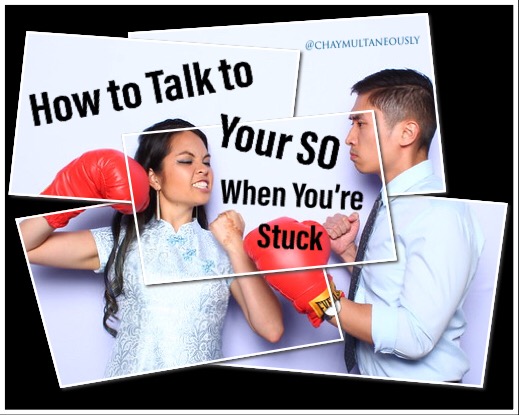How to Listen Like a Therapist 101
 |
| Photo by Jessica Flavia on Unsplash |
From the moment I started learning about how to be a counselor, the thought struck me over and over again: why don't we all go through this education? Why wouldn't it be beneficial for every single person to learn about their emotions, their triggers, their behaviors, their struggles? So I became a counselor, and I decided that the things we learn in graduate school were not secrets or tricks of the trade - they should be common sense.
Does this mean we don't need professional therapists and counselors? Nah. Trying to fix some of your own issues (the really heavy ones) is like trying to do surgery on yourself. It really is best to let someone help you with that.
However, lots of our problems are TOTALLY self-fixable if we can all learn the basics. Maybe it'll alleviate a bit of the pressure off of the therapists of the world.
I really don't see this as "revealing the magician's tricks" though it may seem that way. Sometimes people will say, "I see what you're doing, you're therapizing me!" (One of my favorite incorrect words, btw) And this may be so - but what if we all knew how to do it? Would it be "therapizing" anymore? Or just... I dunno... Listening with a bit more heart?
The first thing I learned at St. Mary's College of CA: the Art of Helping - HRD model. It stands for Human Resource Development...model, which seems really silly and business-y to me. Anyways. It's a framework on which to build your therapist personality. Think of HRD as the basic frame of like a car, the axels and shape of it, etc. and your therapist or counselor builds different features on the exterior and interior to make each car unique and functional for different terrain and personalities.
HRD taught us how to sort what we are listening to. So, as we are listening to a client, we begin to note things that we hear and sort them into different "mailboxes". Each mailbox has a number and a purpose. This helps us navigate where to help the client bring their attention.
The mailboxes also help us "peel the onion" as the favorite expression of our professors went. And yeah, onion is appropriate because therapy can really stink. Each layer might look pretty much like the first, but as you get deeper, you start to get to the core of the matter.
The Mailboxes
1: The Situation - The story, at its surface.
- Ex: I saw my brother today. We had a fight.
2: How The Client Feels About The Situation
- Ex: It pissed me off that he would try to get out of paying for his share of our trip that we've been planning. (Read: Anger, Frustration, Disappointment)
3: Their Beliefs
- Ex: He's always been kind of a dick, but I didn't realize he was so stingy and cheap until now. (Need to ask client to tell me more about what "being a dick" means to them... ^belief about brother's character)
4: How They Contribute to the Problem
- Ex: I mean, I had to put down the initial payment but like, he was supposed to pay me back. And yeah, I've let him off easy on smaller things but... this is a trip, I can't pay for it all myself!
*5: How The Client Feels About Themselves
- Ex: He's my little brother and he always does this to me. I'm not gonna be there to bail him out every single time, and what about me, huh?
>>> Clients rarely, if ever, spell this out for you, so this is the heart of what therapy is about. If I were to make an inference about this really basic example that I made up, I would guess that the client is feeling used, feels perhaps helpless, feels guilty - for even asking for their 'little brother' to have to pay at all, feels worthless, like their brother wanting to get out of paying for this trip is really about being worth the effort.
*6: What the Client Can't Figure Out
- Ex: We've had this fight like a million times. He's gonna find another excuse about whatever stupid thing or he's gonna say he's gonna pay me back, and I'm never gonna see that money. Makes me think... I shouldn't even go on a trip with him ever again.
>>> This is the other, most difficult piece of counseling. At first, you might think, no this is very cut and dry! The client obviously can't figure out how to get their brother to pay for the trip. This is the surface level of the issue - what the client is REALLY saying is: I can't figure out how to assert my boundaries with my brother, to keep our relationship from damaging my self-worth.
*7: What the Client Really Wants
This is the flipside of 6. The "I can't" turns into an "I want" or a How question, such as: How can I find my self-worth again? And if I do find my self-worth, what will my relationship with my brother look like? Can it be something more mutual, more whole?
We pay the big bucks for breakthroughs like that.
8: The Solution Process / Goal-Setting
------------------------------------------------------------------------
Alright, now you've "seen behind the curtain" of therapy. And as I mentioned, we never ever go from 1 to 2 to 3 to 4.. etc. in a linear fashion. People are messy, convoluted, wonderful beings. We will spin between 1-2-1-3-1-1 for awhile until suddenly we hit a corner and we're forced to change directions.
Do I want you to try to "therapize" other people after reading this blog? Absolutely not. There are so many more things I haven't said about how to go about listening with empathy and reflecting what you're hearing to another person. I don't want anyone irresponsibly trying to uncover everyone else's trauma, please and thank you.
Do I want you to start "therapizing" yourself? Yeah. For the small stuff. Listening to yourself is the first part of being a good therapist, but also just being a good fricken person. Listen to yourself talk about problems. Ask yourself how you feel about the situation. What you believe about the issue at hand. What you're doing to contribute to it, what you feel about yourself - and be so bold-faced honest. And what you really can't figure out, and what you really do want.
So many of us would be better off if we learned to listen to ourselves like that.


Comments
Post a Comment